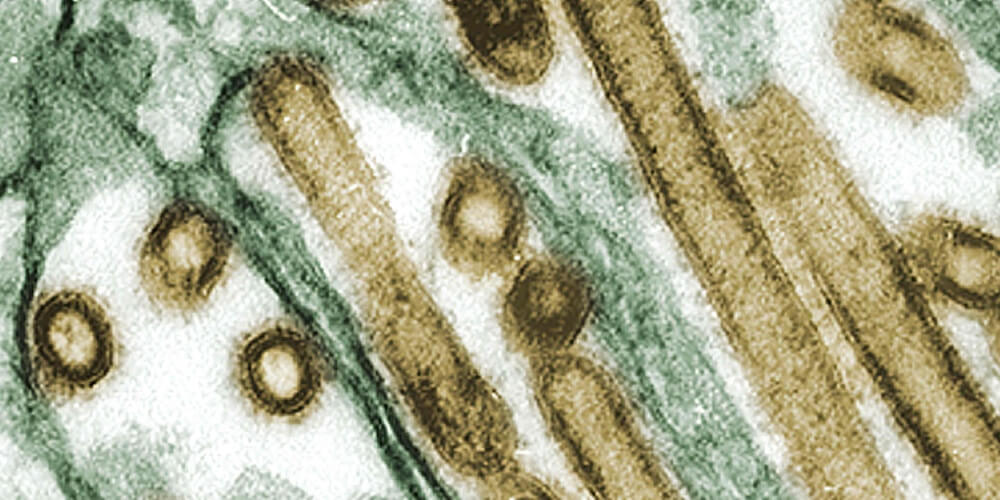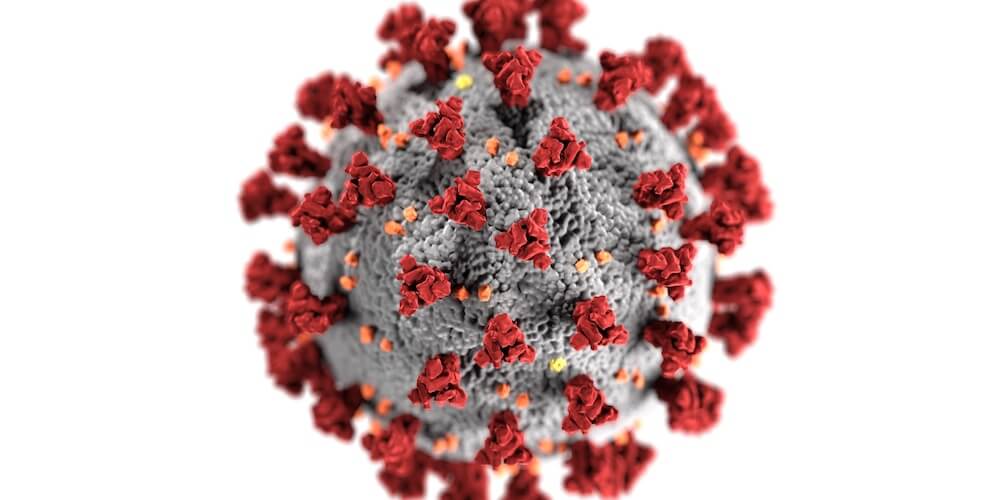Influenza A(H5) virus: A potential pandemic threat

Wild aquatic birds are the natural reservoir for influenza A virus of subtypes H1–H16 and N1–N9 (Krammer et al., 2018), named avian influenza virus. Virus transmission from wildlife reservoirs to domestic animals is a critical step in a chain of events that leads to exposure and infection of humans. This has been exemplified by the recent COVID-19 pandemic, in addition to the influenza A viruses (IAVs) that have caused four pandemics during the last 100 years (de Wit et al., 2016; Guarner, 2020; Hilgenfeld and Peiris, 2013). In nature, maintained IAV lineages are adapted to particular host species, thus successful interspecies transmission may be very challenging for the virus (Subbarao, 2019). The first attention to influenza A(H5) was in the 1990s when the first highly pathogenic avian influenza (HPAI) virus of subtype H5 was recorded in birds and then found in humans in Guangdong province in China. Since then, the H5 virus continued to evolve into 10 clades (0–9) and several subclades based on phylogenetic inference of the hemagglutinin (HA) gene segment (Sonnberg et al., 2013). During 2020 through 2023, several countries around the globe have suffered from the worst epizootic of HPAI virus ever, causing severe economic losses to the poultry industry, thousands of outbreaks among wild and domestic birds (European Centre for Disease Prevention and Control (ECDC), 2023), as well as human cases caused by subtypes of H5N8, H5N6, and H5N1 (European Centre for Disease Prevention and Control (ECDC), 2021; World Health Organisation (WHO), 2022). In addition, the recent HPAI virus of subtype H5 has been reported in a high number of mammalian species and has shown markers for mammalian adaptation (Adlhoch et al., 2023). Although the total number of H5Nx infections in humans still remains low, as compared to seasonal outbreaks of truly human-adapted influenza viruses, the threat to Public Health remains high due to the extreme case fatality rate of HPAI in humans of up to 60% (World Health Organisation (WHO), 2021).
Is the influenza A (H5) virus likely to be the cause of the next human pandemic? The currently circulating strain of highly pathogenic avian influenza (HPAI) virus of subtype H5 has shown the ability to cross species barriers; spreading from wild birds to domestic poultry and then eventually to many other mammalian species (for example cats, seals, and minks). There have been sporadic human deaths but, so far, no report of human-to-human virus transmission. Because of the segmented nature of the influenza virus genome, reassortment (gene exchange) between AIV strains could occur when two different sub- or genotypes co-infect the same cell (Greenbaum et al., 2012). Reassortment between influenza viruses of animal (avian) and human origin, respectively, preceded the emergence of at least the last three influenza pandemics (H2N2-1957, H3N2-1968, and H1N1-2009) (Horimoto and Kawaoka, 2001; Katz et al., 2009; Yen and Webster, 2009). During the last few years, an increased level of activity of different novel reassortants of HPAI virus of subtype H5Nx of clade 2.3.4.4 has been reported in many countries (European Centre for Disease Prevention and Control (ECDC), 2023; Xie et al., 2023). By late 2021, a novel reassortant virus of the HPAI H5N1 of clade 2.3.4.4b has emerged as a result of a reassortment event between the H5N8 of clade 2.3.4.4b and an unknown virus that donated the N1 gene segment. The HPAI H5N1 viruses currently circulating already underwent multiple reassortments with unknown AIVs to form at least 16 different genotypes. Current evidence suggests that the new H5N1 virus of clade 2.3.4.4 should be considered of low risk to humans. However, co-infection with this HPAI virus and other influenza strains in animals or humans could result in the emergence of novel virus strain(s); having gained the capacity for efficient spread between humans while retaining the highly pathogenic phenotype - the key to becoming a pandemic virus. Therefore, a key question is how to be prepared for the next pandemic.
How to be better prepared for the next pandemic? Sustained genetic monitoring for the detection of novel influenza strains, coupled with early reporting and sharing sequencing and surveillance data between different authorities, collectively constitute pivotal strategies for better pandemic preparedness. Ultimately, the One Health approach is imperative to enhance the prospects of early identification of zoonotic pathogens with pandemic potential and thus preventing their spillover into the human population.
Cite this editorial
Naguib, M.M. (2023). Editorial- Influenza A(H5) virus: A potential pandemic threat. SciLifeLab. Online resource. DOI 10.17044/scilifelab.24460567.
